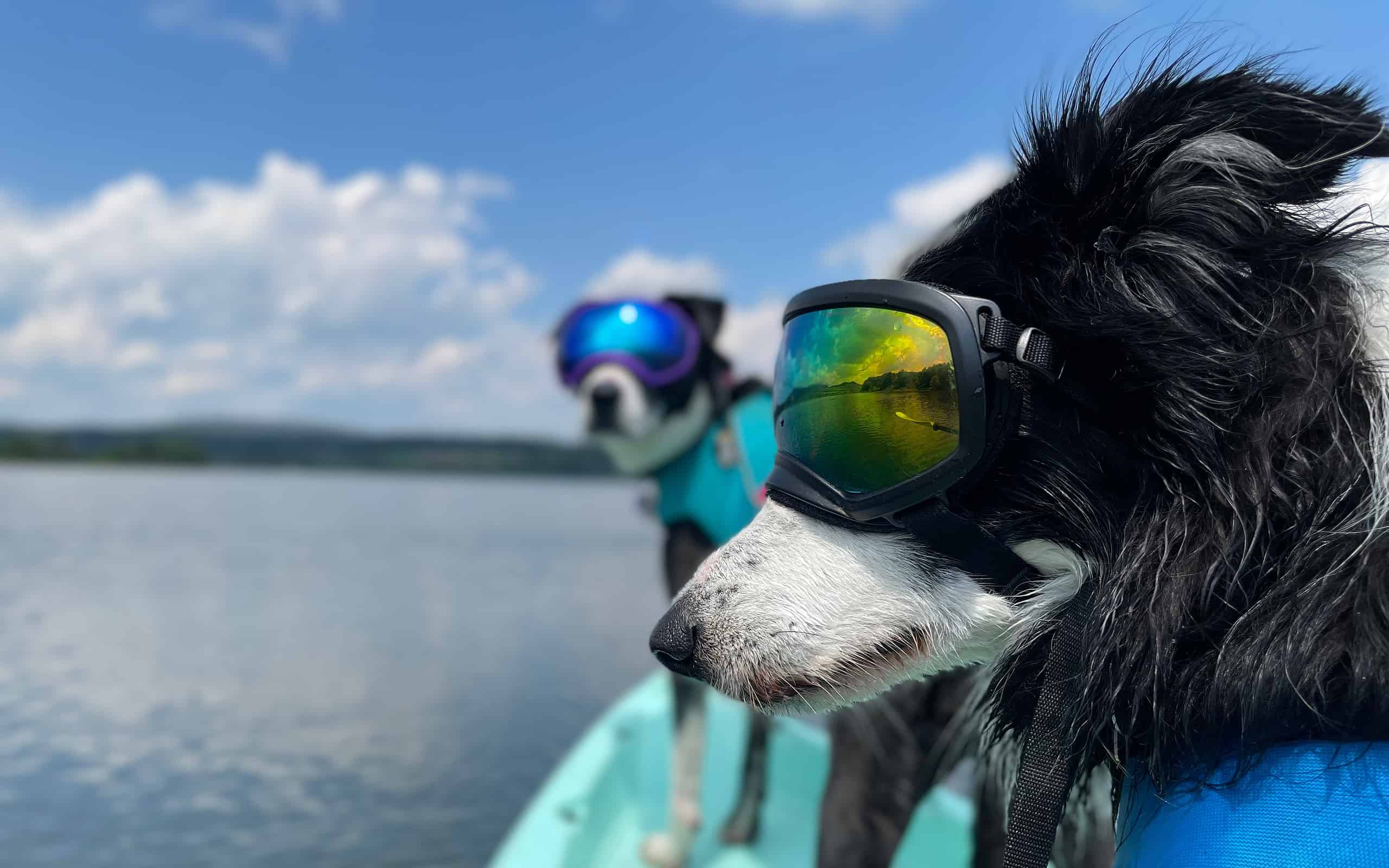The wind rustles through the trees like an orchestra. Birds sing the enchanting melody. The water kissing the banks create a steady, comforting rhythm. Kayaking may technically be a sport, but spending a beautiful day on the water is like art.
We already know how crucial exercise is to the health and happiness of our favorite furry family members, but why limit them to just dog walks or hiking? Spending time in a kayak drifting along can be extremely calming, and all dogs are capable of learning to swim (although some breeds aren’t huge fans). Whether you’re new to paddling entirely or simply interested in learning how to incorporate man’s best friend on your next outing, we’ve got you covered. Keep reading to learn more about choosing the ideal kayak for your dog!
You’re Gonna Need a Bigger Boat: Making Room for Rover
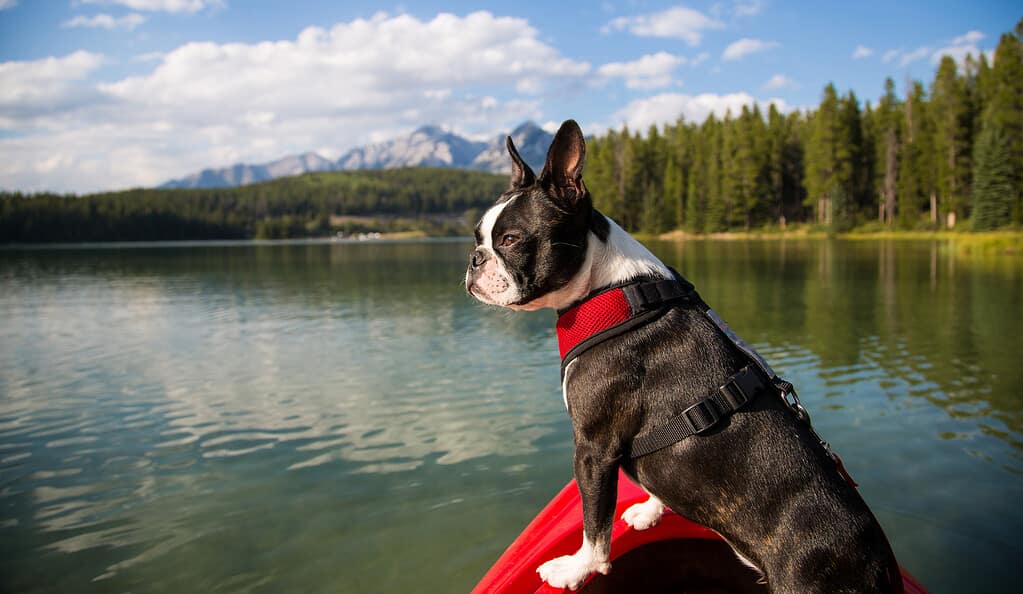
Smaller dogs are easier to accommodate, but not all kayaks will be appropriate for every dog.
©Cols3/iStock via Getty Images
From whitewater, racing, and fishing to recreational and touring boats, there is a seemingly unending amount of options when it comes to selecting a kayak. Additionally, several of these boat types are available as solo and tandem (two-person) options. When shopping for a kayak for your dog, the four most important items to consider are the dog space, weight limitations, stability, and maneuverability of the kayak.
Dog Space
Some value-priced kayaks are great starter boats but aren’t always the best option for your pooch. If you are considering a sit-in kayak, make sure the cockpit has plenty of room to accommodate your dog. Conversely, for a sit-on-top kayak, avoid boats that lack sufficient flat space that will allow your dog to relax comfortably. Many less-expensive sit-on-top boats have molded grooves to accommodate different paddler heights but interfere with where your dog can rest.
Weight Limitations
Check the weight limitations for any kayak you’re considering purchasing. Ensure the boat can accommodate the weight of not only you and your dog, but any gear you plan to carry with you on each trip. Kayaks carrying more weight than they’re designed to hold can be more difficult to paddle, due to sitting lower in the water, and can even take on water in extreme instances.
Stability
Long, skinny kayaks look attractive and move quickly through the water but aren’t always a great option for Seabiscuit. Because these boats are built for speed, their slim profiles do not provide much stability. Furthermore, larger dogs may struggle to fit comfortably in a narrower boat. Also, excitable dogs that shift or wiggle frequently could unintentionally turn your kayaking trip into a stressful river float.
Maneuverability
Larger boats ensure more room for your pup and gear but can create another issue: maneuverability. In addition to loading up your kayak, this can also be a concern when on the water. Unless you’re exploring tandem kayaks and plan to have a paddling partner, it’ll be entirely on you to handle the grunt work when on the water with your pooch. If paddling solo, don’t immediately go for the largest, heaviest boat. That could tire you out on the water and turn this great hobby into a chore.
What’s Below the Surface: Selecting a Hard-Shell or Inflatable Kayak
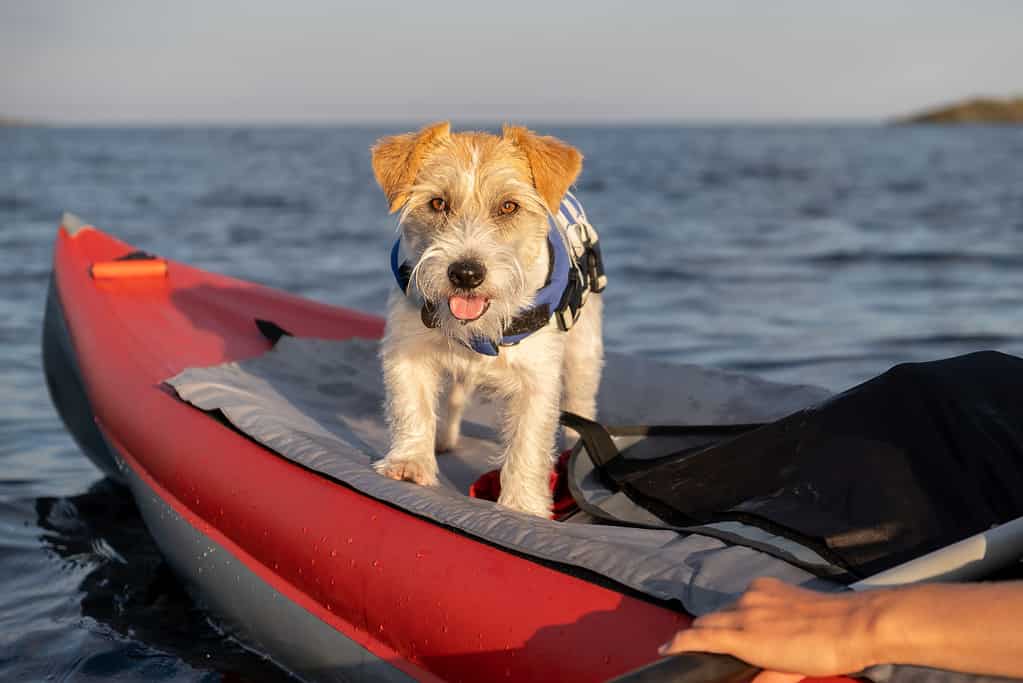
Both inflatable and hard-shell kayaks are great options for our furry first mates!
©Alexander Pytskiy/iStock via Getty Images
The two most popular styles of kayaks currently are hard-shell and inflatable kayaks. Hard kayaks are available in a variety of materials, such as fiberglass and plastic, which creates a reliably durable vessel. On the other hand, most inflatable kayaks are made from PVC. Both hard and inflatable kayaks are great solutions for paddling with your dog, but here’s what to keep in mind for each:
Inflatable Kayaks
The biggest selling point for inflatable kayaks is convenience. Most inflatables come in a bag with everything you need and can be easily tossed in the car for transport. These boats require less space and can be stored in a closet when not in use. As technology advances, inflatable kayaks continue to grow in durability, stability, and cost effectiveness. While the strong air pressure of an inflatable kayak means your dog is unlikely to pop it with their nails, it isn’t a bad idea to trim or grind them smooth before venturing out. On the downside, because inflatable kayaks have more pieces than a hard-shell kayak, that leaves more opportunities for things to go wrong. Maybe you forgot your air pump and end up spending half an hour inflating it by hand. Or perhaps a piece on the valve breaks. Comb product reviews and warranties before making any large investments.
Hard-Shell Kayaks
Unlike their inflatable counterparts, hard-shell kayaks require more storage space, more time and effort to transport, and weigh significantly more. While actually getting on and off the water may be less convenient, these time-tested boats still take the prize for most durable and their heavier weights make them a bit more stable if you are in moving or choppy water. If planning to paddle on any streams or rivers with strong currents, or larger lakes that subject you to waves, a hard-shell kayak can offer you a sturdier solution. Additionally, because hard-shell kayaks have been available for much longer, there’s also a better chance of snagging a second-hand boat from your local online marketplace.
Kayaks 101: Sit-In or Sit-On-Top Kayaks
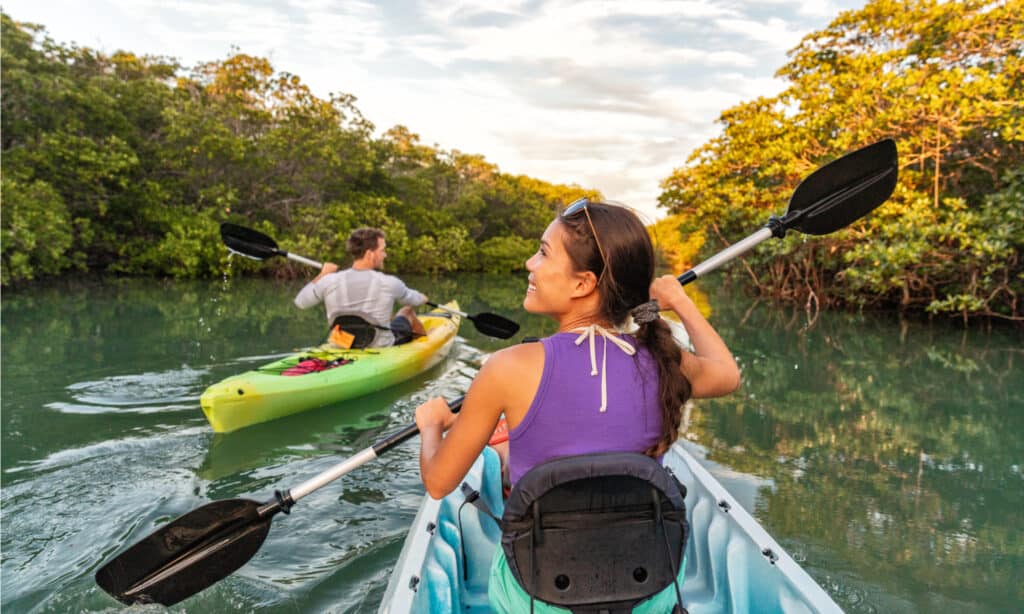
©Maridav/Shutterstock.com
The green/yellow boat to the left is considered a sit-in kayak, while the light blue boat on the right is a tandem sit-on-top kayak.
In addition to deciding between an inflatable or hard kayak, you’ll also need to determine if you’re more comfortable with a sit-on-top or sit-in kayak. While this will mostly be a personal preference, there are pros and cons to both.
Sit-In Kayak
The sit-in, hard-shell kayak is the traditional style of boat you imagine when picturing a kayak. Sit-in kayaks feature a cockpit cutout on top and then a fully hollow, enclosed interior. For smaller dogs, this may be a perfect solution to keep your pup securely in place. Sit-in kayaks help keep you dryer while paddling compared to sit-on-top options. However, if your sit-in kayak accidentally flips, returning your kayak upright, draining the water, and getting you and your pet back in can be much more challenging. Additionally, if your dog enjoys swimming, it can be more difficult getting Rover back in your boat from the water.
Sit-On-Top Kayak
Conversely, sit-on-top kayaks are fully open on top. You’re more likely to get wet on a sit-on-top, but they are a more versatile option for larger doggy paddlers. When your pup is finished swimming, there is less of a ledge to lift them over. Also, it’s easier to add stability by putting your paddle in the water on the opposite side of your dog, creating counterweight. Sit-on-top kayaks typically provide more flat space, allowing you room to accommodate larger or multiple dogs. Lastly, sit-on-top kayaks are more convenient if you flip unexpectedly. They don’t have a large, hollow compartment that can fill with water, and most have holes that help drain unwanted water from the boat while getting yourself re-situated. However, this makes fastening all of your belongings to your boat crucial, to avoid them becoming lost at sea (or lake, or river).
Test Different Boats and Support Local Business
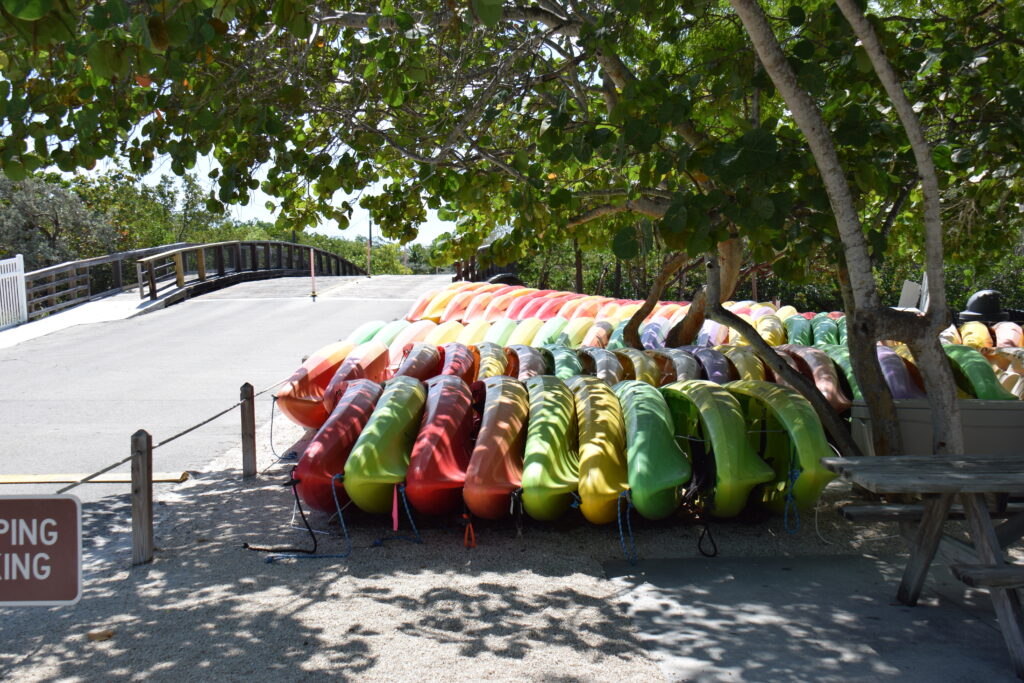
Many local, small businesses that sell kayaks will host events where you can test out different types of boats.
©dlsdds/Shutterstock.com
Think you have the perfect boat in mind for you and Fido, but not yet ready to take the financial plunge? Given the cost of some kayaks, this is completely understandable. Before making a big purchase, consider reaching out to small businesses in your area that focus on outdoor recreation. Many times, small, locally owned companies will host events where shoppers can test paddle a variety of different types of kayaks, canoes, or paddleboards, to help you determine your perfect fit. Speaking with these local kayaking experts can provide priceless feedback and hopefully schedule a time for you (and maybe even your pooch!) to give paddling a try.
Don’t Rock the Boat – Put Safety First
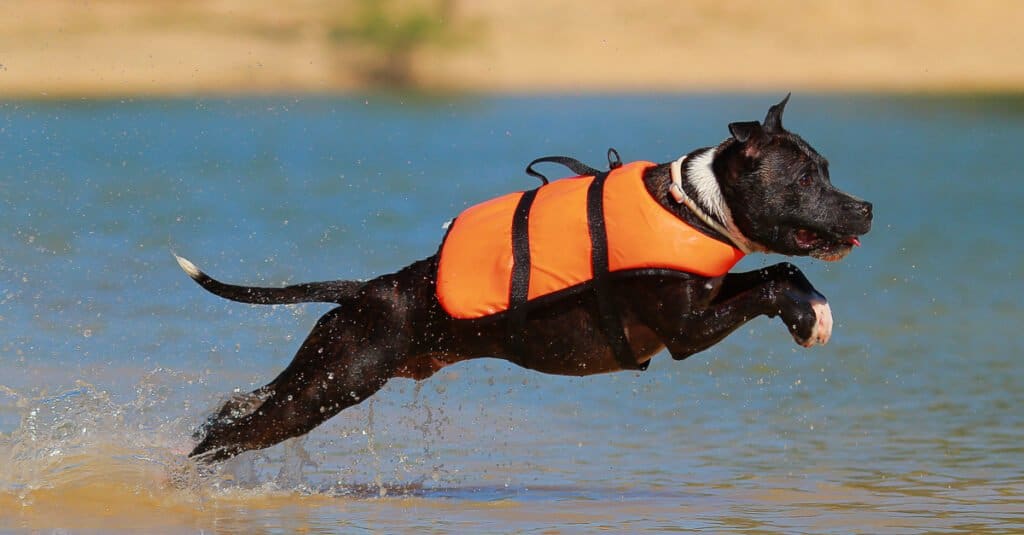
Don’t hit the water before making sure everyone is safe.
©Melounix/Shutterstock.com
In addition to selecting an appropriate kayak for your dog, it’s crucial to make safety a priority on every outing. Prior to leaving, check the weather for any potential storms and to ensure temperatures won’t get too hot. Secondly, make sure you have life jackets for both you and your pup. Third, keep a first aid kit and a copy of your dog’s vet records in your car, and know your closest emergency vet in case anything goes wrong. Lastly, it’s important to have a basic knowledge of pet first aid, such as what to do if there’s a severe accident and your beloved pet nearly drowns.
Enjoy Your Doggy Paddle
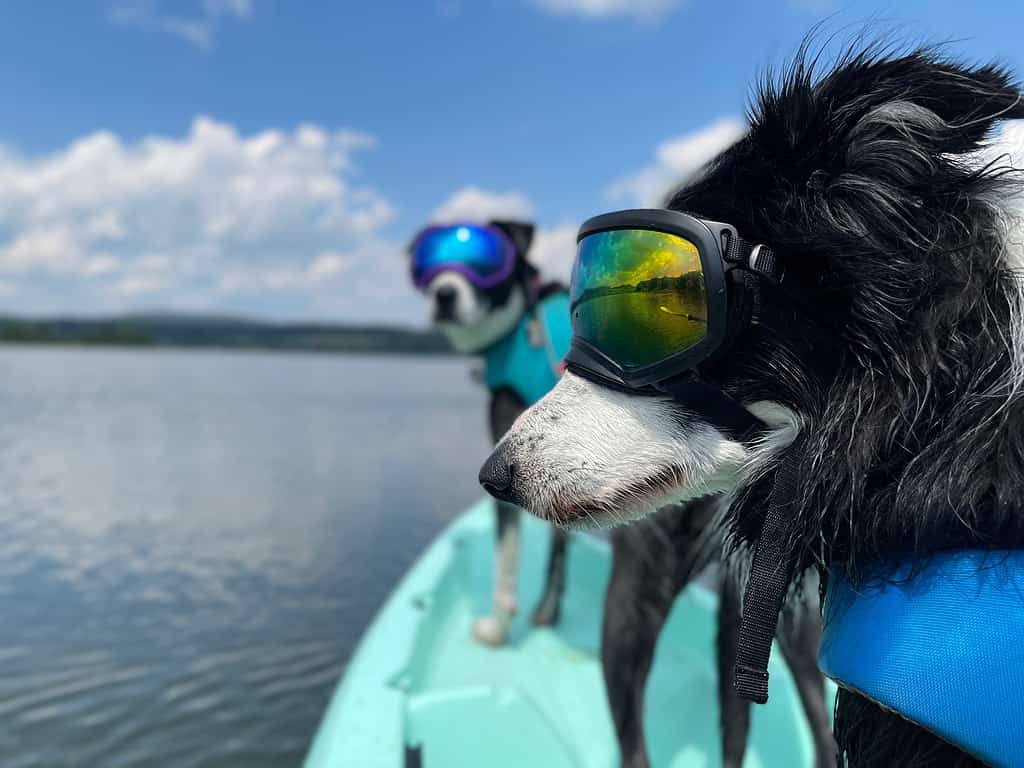
Kayaking is a great way to enjoy time outdoors with your pooch!
Spending time on the water with your dog is a great opportunity to bond, burn some calories, and have fun. With the right precautions and a dog-friendly kayak, you and your pooch can make waves on new and exciting adventures. Happy paddling!
Ready to discover the top 10 cutest dog breeds in the entire world?
How about the fastest dogs, the largest dogs and those that are -- quite frankly -- just the kindest dogs on the planet? Each day, AZ Animals sends out lists just like this to our thousands of email subscribers. And the best part? It's FREE. Join today by entering your email below.
Thank you for reading! Have some feedback for us? Contact the AZ Animals editorial team.

